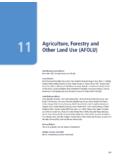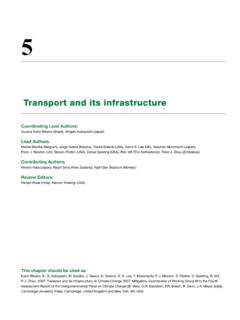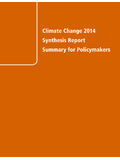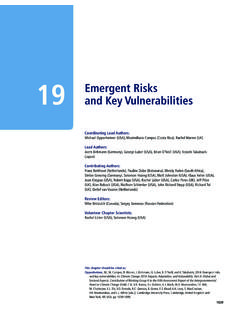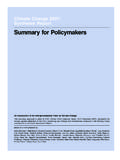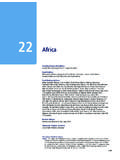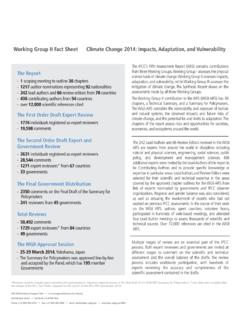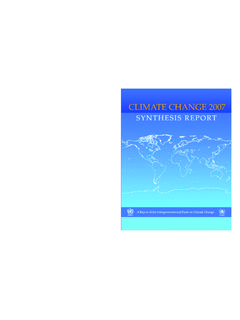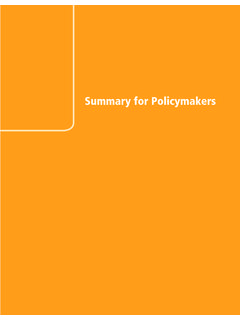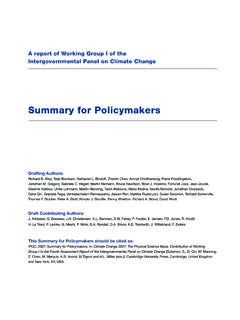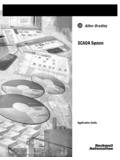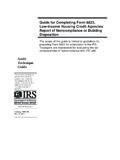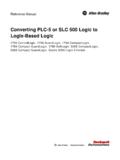Transcription of 14 — Adaptation Needs and Options - IPCC
1 83314 AdaptationNeeds and OptionsCoordinating Lead Authors:Ian R. Noble (Australia), Saleemul Huq (Bangladesh/UK)Lead Authors:Yuri A. Anokhin (Russian Federation), JoAnn Carmin (USA), Dieudonne Goudou (Niger),Felino P. Lansigan (Philippines), Balgis Osman-Elasha (Sudan), Alicia Villamizar (Venezuela)Contributing Authors:Jessica Ayers (UK), Frans Berkhout (Netherlands), Kirsten Dow (USA), Hans-Martin F ssel(Germany), Joel Smith (USA), Kathleen Tierney (USA), Helena Wright (UK)Review Editors:Anthony Patt (Austria), Kuniyoshi Takeuchi (Japan)Volunteer Chapter Scientist:Eric Chu (USA)This chapter should be cited as:Noble, , S. Huq, Anokhin, J. Carmin, D. Goudou, Lansigan, B. Osman-Elasha, and A. Villamizar, 2014: Adaptation Needs and Options . In: Climate Change 2014: Impacts, Adaptation , and Vulnerability.
2 Part A:Global and Sectoral Aspects. Contribution of Working Group II to the Fifth Assessment Report of theIntergovernmental Panel on Climate Change[Field, , Barros, Dokken, Mach, Mastrandrea, Bilir, M. Chatterjee, Ebi, Estrada, Genova, B. Girma, Kissel, Levy, S. MacCracken, Mastrandrea, and White (eds.)]. Cambridge University Press, Cambridge, United Kingdom and NewYork, NY, USA, pp. Summary .. Introduction .. Adaptation Needs ..839 Biophysical and Environmental Needs ..840 Social Needs ..841 Institutional Needs ..842 Need for Engagement of the Private Sector ..843 Information, Capacity, and Resource Needs .. Adaptation Options ..844 Structural and Physical Options .
3 845 Engineering and Built Environment ..846 Technological Options ..846 Ecosystem-Based Adaptation ..846 Service Options ..847 Social Options ..847 Institutional Options ..848 Selecting Adaptation Options .. Adaptation Assessments ..850 Purpose of Assessments ..850 Trends in Assessments ..850 Issues and Tensions in the Use of Assessments ..851 National Assessments .. Measuring What Is to Be Measured? ..854 Established Metrics ..855 Vulnerability Metrics ..855 Metrics for Resource Allocation.
4 855 Metrics for Monitoring and Evaluation ..856 Validation of Metrics ..856 Assessment of Existing and Proposed Metrics for Adaptation ..857 table of Contents835 Adaptation Needs and Options Chapter Addressing Causes of Maladaptation ..858 Screening for Maladaptation ..858 Experiences with Maladaptation .. Research and Data Gaps ..859 References ..860 Frequently Asked Question : Why do the precise definitions about Adaptation activities matter?..853836 Chapter 14 Adaptation Needs and Options14 Executive SummarySince the Fourth Assessment Report (AR4), the framing of Adaptation has moved further from a focus on biophysical vulnerabilityto the wider social and economic drivers of vulnerability and people s ability to respond (robust evidence, high agreement).
5 Thesedrivers include the gender, age, health, social status, and ethnicity of individuals and groups, and the institutions in place locally, nationally,regionally, and internationally. Adaptation goals are often expressed in a framework of increasing resilience, which encourages considerationof broad development goals, multiple objectives, and scales of operation, and often better captures the complex interactions between humansocieties and their environment. The convergence between Adaptation and disaster risk management has been further strengthened since AR4,building on the IPCC Special Report on Managing the Risks of Extreme Events and Disasters to Advance Climate Change Adaptation (SREX).{ } Adaptation Needs arise when the anticipated risks or experienced impacts of climate change require action to ensure the safetyof populations and the security of assets, including ecosystems and their services (medium evidence, medium agreement).
6 Adaptation Needs are the gap between what might happen as the climate changes and what we would desire to happen. The use of the termneeds has also shifted with the framing of Adaptation . In the National Adaptation Programmes of Action (NAPAs) Needs were usuallydiscussed in terms of major vulnerabilities and priority Adaptation activities, and, in both developing and developed countries, this hazard-based approach with a focus on drivers of impacts and Options to moderate them is still used often for urban or regional programs. But morerecently, the focus has been on tackling the underlying causes of vulnerability such as informational, capacity, financial, institutional, andtechnological Needs . { }Engineered and technological Adaptation Options are still the most common adaptive responses, although there is growingexperience of the value for ecosystem-based, institutional, and social measures, including the provision of climate-linked safetynets for those who are most vulnerable (robust evidence, high agreement).
7 Adaptation measures are increasing and becoming moreintegrated within wider policy frameworks. Integration, though it remains a challenge, streamlines the Adaptation planning and decision-makingprocess and embeds climate-sensitive thinking in existing and new institutions and organizations. This can help avoid mismatches with theobjectives of development planning, facilitate the blending of multiple funding streams, and reduce the possibility of maladaptive actions. Theincreasing complexity of Adaptation practice means that institutional learning is an important component of effective Adaptation . { }Approaches to selecting Adaptation Options continue to emphasize incremental change to reduce impacts while achieving co-benefits, but there is increasing evidence that transformative changes may be necessary in order to prepare for climate impacts(medium evidence, medium agreement).
8 While no-regret, low-regret, and win-win strategies have attracted the most attention in the pastand continue to be applied, there is increasing recognition that an adequate adaptive response will mean acting in the face of continuinguncertainty about the extent of climate change and the nature of its impacts, and that in some cases there are limits to the effectiveness ofincremental approaches. While attention to flexibility and safety margins is becoming more common in selecting Adaptation Options , manysee the need for more transformative changes in our perception and paradigms about the nature of climate change, Adaptation , and theirrelationship to other natural and human systems. { , }Among the many actors and roles associated with successful Adaptation , the evidence increasingly suggests two to be critical toprogress: those associated with local government and those with the private sector (medium evidence, high agreement).
9 Thesetwo groups will bear increasing responsibility for translating the top-down flow of risk information and financing and in scaling up the bottom-up efforts of communities and households in planning and implementing their selected Adaptation actions. Local institutions, including localgovernments, non-government organizations (NGOs), and civil society organizations, are among the key actors in Adaptation but are oftenlimited by lack of resources and capacity and by continuing difficulties in gaining national government or international support, especially indeveloping countries. { } Private entities, from individual farmers and small to medium enterprises (SMEs) to large corporations, will seekto protect and enhance their production systems, supply lines, and markets by pursuing Adaptation -related opportunities.
10 These goals will helpexpand Adaptation activities but they may not align with government or community objectives and priorities without coordination and incentives.{ } 83714 Adaptation Needs and Options Chapter 14 Adaptation assessments, which have evolved in substance and style since AR4, have demonstrably led to a general awarenessamong decision makers and stakeholders of climate risks and Adaptation Needs and Options . However, such awareness has oftennot translated into Adaptation action (medium evidence, high agreement). Most of the assessments of Adaptation done so far havebeen restricted to impacts, vulnerability, and Adaptation planning, with very few assessing the processes of implementation and evaluation ofactual Adaptation actions.
